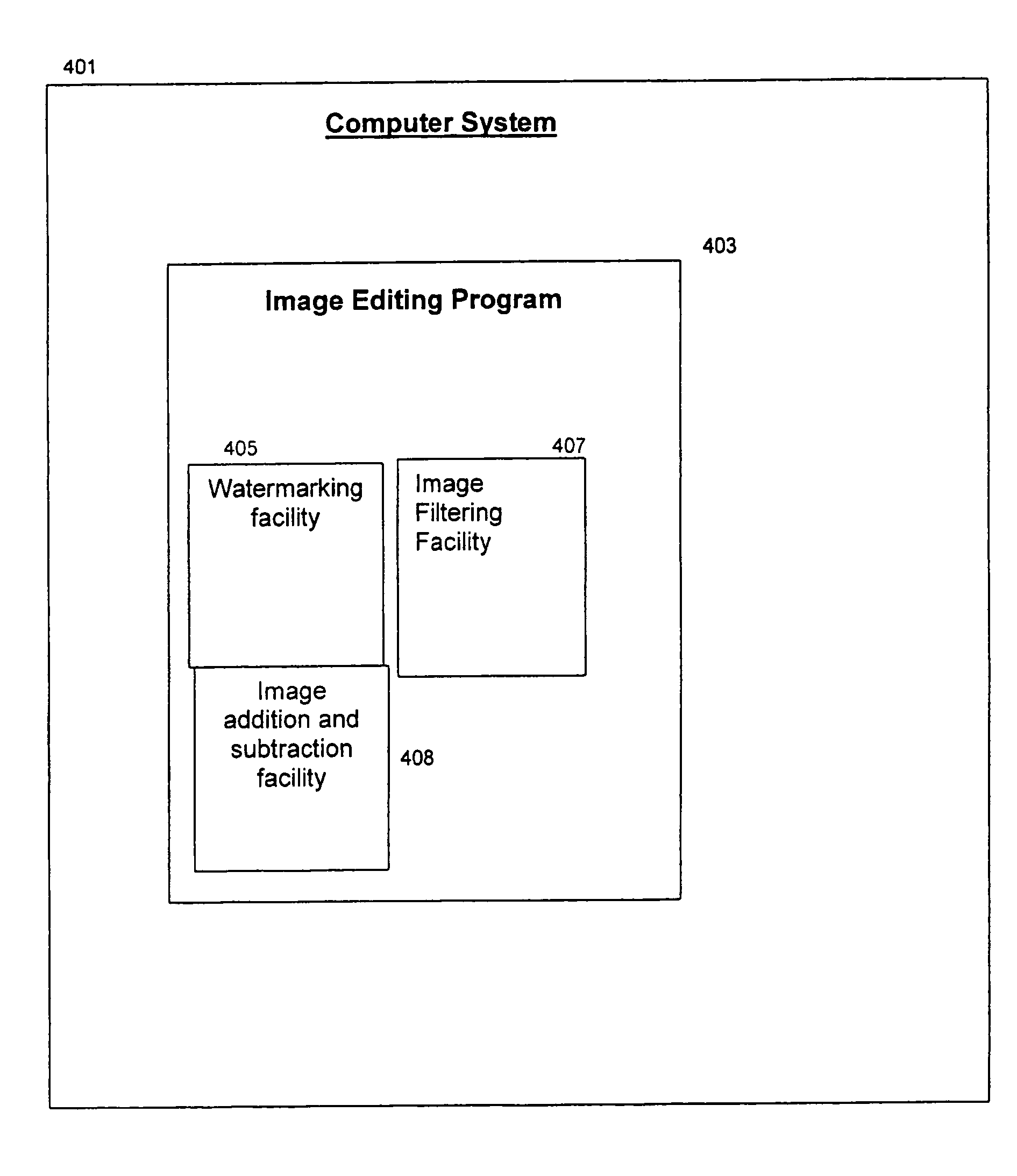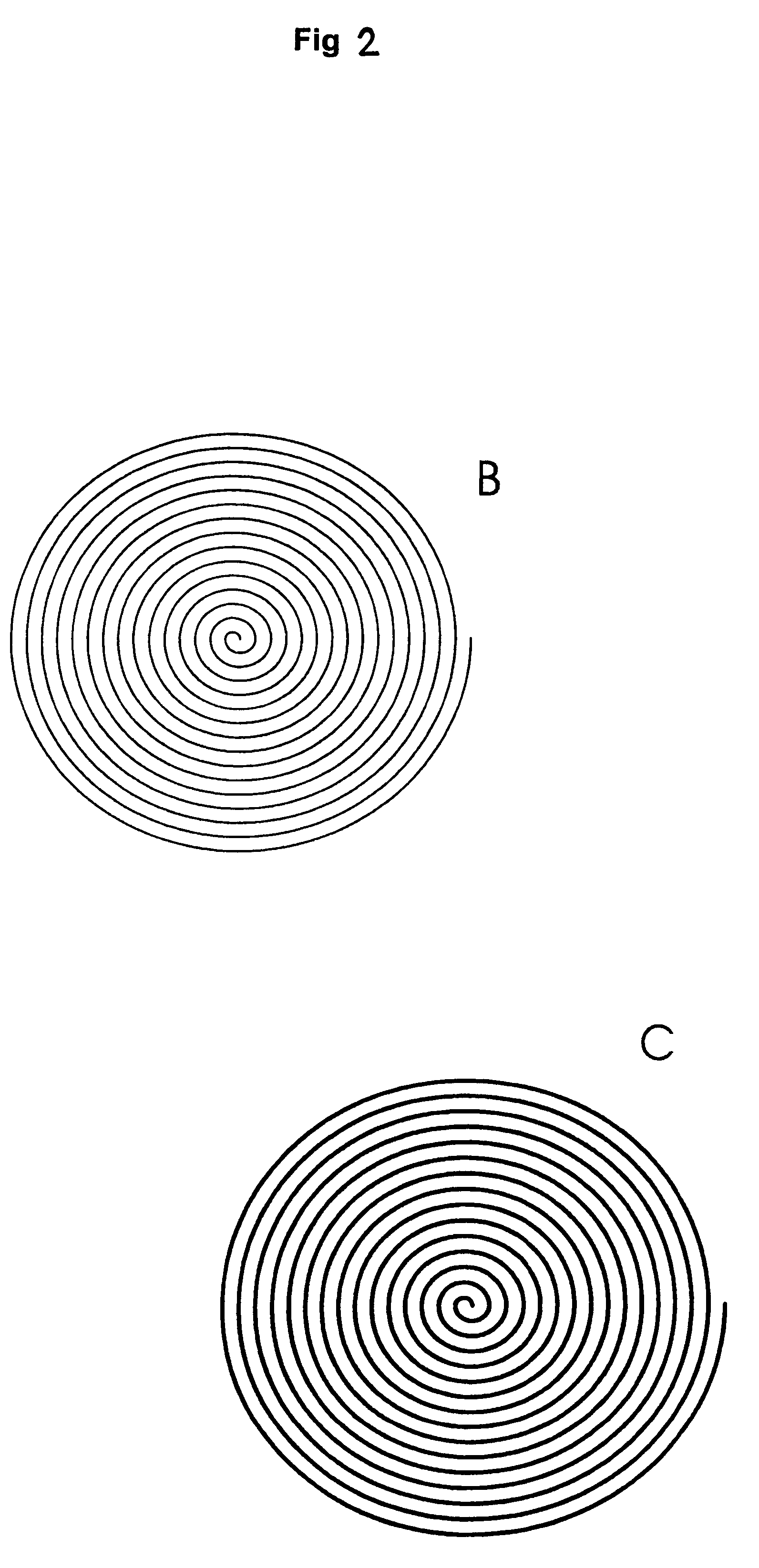Watermarking different areas of digital images with different intensities
a technology of digital images and intensities, applied in the field of steganography, can solve problems such as visual artifacts created by watermarks, and achieve the effect of easy detection and reading of watermarks
- Summary
- Abstract
- Description
- Claims
- Application Information
AI Technical Summary
Benefits of technology
Problems solved by technology
Method used
Image
Examples
Embodiment Construction
[0018]In a first preferred embodiment, the technology is applied to an image which consists of a series of lines. Images which consist of a series of lines are, for example, often found as background imagery on security documents and on currency. A digital watermark can be inserted into such an image using line width modulation techniques such as those shown in co-pending U.S. patent applications Ser. No. 09 / 074,034, filed May 6, 1998 which corresponds PCT / US99 / 08252 (and which has now issued as U.S. Pat. No. 6,449,377), and Ser. No. 09 / 127,503, filed Jul. 31, 1998 which corresponds to PCT / US99 / 14532 (now published as WO0007356). The disclosures of the above referenced documents are incorporated herein in their entireties
[0019]A typical image which consists of a series of lines will have a relatively complex set of lines; however for ease of explanation the technology will herein be described as applied to a very simple image. This technology can be applied to complex images in exac...
PUM
 Login to View More
Login to View More Abstract
Description
Claims
Application Information
 Login to View More
Login to View More - R&D
- Intellectual Property
- Life Sciences
- Materials
- Tech Scout
- Unparalleled Data Quality
- Higher Quality Content
- 60% Fewer Hallucinations
Browse by: Latest US Patents, China's latest patents, Technical Efficacy Thesaurus, Application Domain, Technology Topic, Popular Technical Reports.
© 2025 PatSnap. All rights reserved.Legal|Privacy policy|Modern Slavery Act Transparency Statement|Sitemap|About US| Contact US: help@patsnap.com



